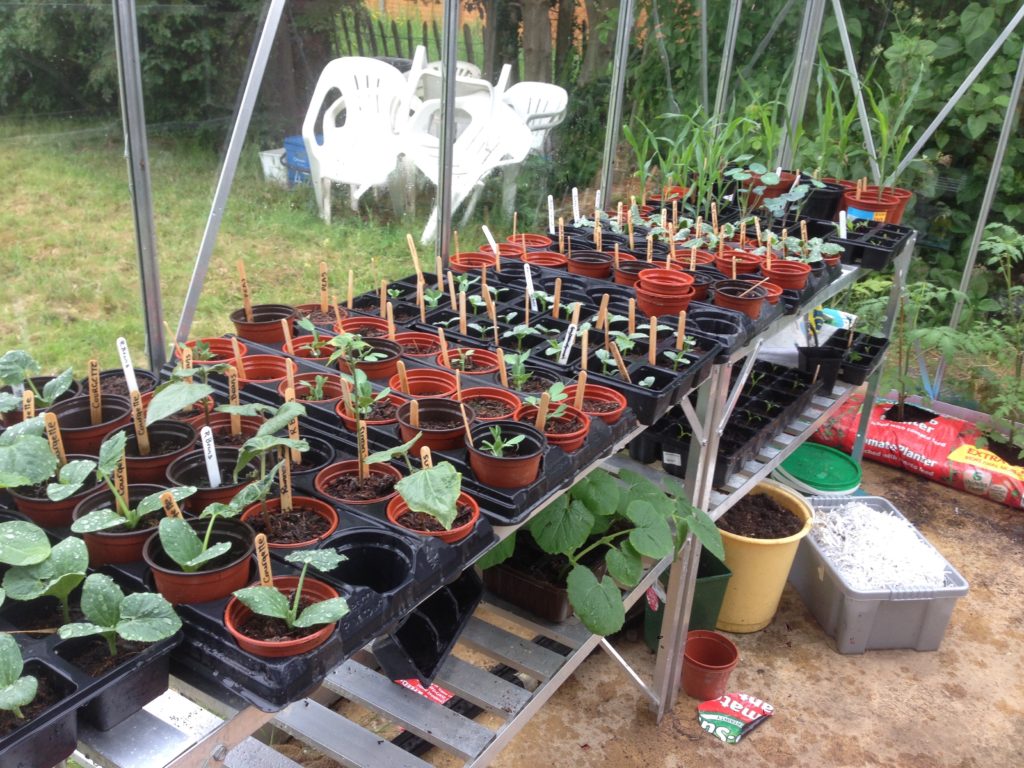By June nights are frost free and summer is beginning to get underway providing perfect conditions for growing but there are still many jobs that need doing in the June garden such as planting, harvesting, watering and weeding. Although June can be a busy month in the vegetable plot remember to take time to admire your flourishing garden and enjoy the abundance you have created with all your hard work.
Longer days and higher temperatures lead to increased water loss so remain alert to dry spells and if you have not done so already mulch any bare soil with a thick layer of organic matter to prevent moisture loss. Remember that mulch can be as effective at preventing moisture from penetrating the soil as retaining it so ensure mulch is applied directly after heavy rain or watering. Also, a less frequent thorough soaking of the soil is much more effective than regular light sprinklings.
Warmer conditions are also perfect for undesirable plants invading your patch, a thick layer of mulch also provides the benefit of supressing weeds. Nature abhors a vacuum and another way to keeps weeds at bay is to provide groundcover and intercrop with summer salad greens rather than creating ready to colonise bare ground with herbicides.
Planting (outside)
- Plant out tomatoes either 2-3 per grow bag or in the soil 45cm apart in a sunny spot, preferably south facing
- Plant out other tender vegetables such as aubergines and peppers in a sheltered sunny spot
- Plant celery in rows 30cm apart, water this thirsty plant well and keep an eye out for brown blisters on leaves that signify celery fly infestations
- Plant marrow, courgettes, pumpkins and squashes 60cm apart
- Plant out celeriac, winter brassicas such as cauliflower, cabbage and brussels sprouts but bear in mind young plants will be vulnerable to pests such as cabbage root fly and dry conditions. Intercropping with fast growing salad vegetables such as lettuce, spinach and radish can act as a ground cover minimising moisture loss, slowing pests and supressing weeds
- Plant out runner beans but ensure supports are installed prior to planting
- Plant out ridge cucumbers, pinch out growing tips when they have grown six pairs of leaves to encourage side shoots
- Plant out sweetcorn, block planting is preferable due to the fact sweetcorn is wind pollinated
Sowing (outside)
- Direct sow marrow, courgettes, pumpkins and squashes, place two seeds per hole?
- Sow turnips for autumn cropping
- Sow Chinese cabbages and other oriental greens, cloches can be used to protect from beetles
- Sow root vegetables such as beetroot, swede, turnips and carrots for winter cropping
- Sow chicory to force in winter
- Sow salad vegetables in succession to provide a long lasting harvest
Harvesting
- Harvest strawberries and gooseberries as they mature
- Harvest rhubarb until the end of June
- Harvest early peas, broad beans and radishes
- Harvest cut and come again salad leaves such as lettuce and spinach
- Harvest turnips, new potatoes, beetroot and carrots
Indoor jobs
- Continue potting on seedlings and young plants
- Ensure plants are well watered in the increasing heat. Bear in mind droplets of water on leaves can act like a magnifying glass causing leaves to scorch so be careful not to damage foliage by allowing drops of water to accumulate on the leaves
- Ventilate greenhouses and shade if required
Additional jobs
- Protect young brassicas from birds by making bird scarers or using fine weave netting or mesh
- Apply organic fertiliser to asparagus after they have flowered
- Stake Jerusalem artichokes
- Tie in soft and pliable stems of runner beans to stakes/supports
- Pinch out tomato side shoots
- Mulch fruit with organic matter to prevent water loss and supress weeds
- Thin out gooseberries around mid-month by pruning new growth. Fruit develops on old woody branches and a good way to tell if growth is new is if it is pliable and doesn’t have fruit on it.
- Strawberries will be producing runners now, if you would like plants to funnel their energy into fruiting remove the majority of the runners or if you would like lots of new strawberry plants peg the runners down
- Train blackberries and hybrid fruits by tying new canes
- Prune excessive growth on vine fruits such as grapes by pinching out growing tips and side shoots on fruit bearing shoots and any side shoots
